If you're cutting back on or eliminating meat and dairy products, you'll want to learn about vegan protein sources for plant-based diets. Many nutritionists recommend that at least two-thirds of dietary protein be derived from plant-based foods. The benefits of plant-based diets are numerous, and you can read all about them in Great Reasons to Go Vegan.
Whole grains, legumes, soy products (organic and non-GMO only, please!), and nuts and seeds are primary protein sources in a plant-based diet. And nearly all vegetables contribute to daily protein needs. Here are some articles on VegKitchen that present high-protein recipes and cooking tips:
- Versatile Tofu
- Cooking with Whole Grains
- Go Nuts for Goodness Sake!
- Bean Basics
- Seitan Recipes and Tips
- Tempeh
- How to Cook and Use Quinoa
- Hearty Pasta Dishes
The Role of Protein
Many basic tissues of the human body are composed of protein including the skin, muscles, tendons and cartilage, even hair and nails. New protein is needed to form enzymes, hormones and antibodies, replace old cells, build new tissues, and transport nutrients in and out of cells.
The body can manufacture all but nine of the 22 amino acids that make up proteins. These nine amino acids are referred to as "essential" amino acids and must be derived from food. That is why getting sufficient, good quality protein is crucial.
More isn't necessarily better
The operative word here is sufficient — more isn't necessarily better. New York Times nutritionist Jane Brody writes in her Good Food Book, "There's no need for an ordinary, healthy person to eat more than the RDA suggests." Further, she writes that many Americans eat twice as much protein as needed. Excess protein can't be stored, and its elimination puts a strain on the kidneys and liver. Too-high protein consumption is linked to kidney disease, cancers of the colon, breast, prostate and pancreas, and even osteoporosis.
In addition, Brody suggests, too much protein can make you fat since most of the typical protein sources in the American diet (70 percent of which comes from animal and dairy foods) are high in fat and calories.
How much protein is enough?
How much, then, is just enough? The Recommended Daily Allowance (RDA), established by the National Academy of Sciences, calculates that an adult in good health needs 0.36 grams of protein per pound of body weight. Thus, a 160-pound man needs about 58 grams of protein a day, and a 120-pound woman needs about 43.
To put this into perspective, here's how a 120-pound woman could fulfill her daily requirement. For breakfast, she has a cup of yogurt with fruit and a slice of whole wheat bread. In her salad at lunch, she includes a half cup of chickpeas. Her main dish at dinner is a generous portion of cooked spaghetti tossed with a cup of broccoli and 4 ounces of tofu.
Some notable exceptions to the RDA guidelines: Pregnant and lactating women need considerably more protein, as do those recovering from surgery and other physical trauma. Infants and children need more total protein per body pound than adults, and the protein must be of high quality and rich in amino acids.
What is "complete protein"?
Those exploring plant-based diets inevitably hear the terms "complete protein" and "protein complementary." Foods with all the essential amino acids in precise proportions readily usable by the body are considered "complete proteins."
Foods that have incomplete proteins can be eaten with other foods whose amino acid structure complements, or completes, their own. For example, corn, which is low in the amino acids tryptophan and lysine but rich in methionine, can be eaten with beans, whose amino acid strengths and weaknesses are just the reverse.
Sounds complicated? Fear not — no need to plan your plant based meals with amino acid charts, calculators and slide rules. Frances Moore Lappe, whose landmark book, Diet for a Small Planet (1971), first made the case for protein complementarity, modified her stand in the book's tenth anniversary edition, apologizing for spawning a generation of neurotic vegetarians. She wrote that "if people are getting enough calories [in a varied diet], they are virtually certain of getting enough protein."
Thus, while complementarity is essential to form usable proteins, complementary foods need not necessarily be combined in the same meal. Amino acids that don't form a complete protein survive in the body for 12 hours. Eating a variety of foods throughout the day insures proteins from plant-based foods will be completed by those in other foods.
How to Put Together Plant-Based Meals
Aromatic grain and nut pilafs, grilled tofu and vegetable kebabs, whole-grain pancakes, and black bean enchiladas are just a few examples of plant-based dishes that provide protein. The coming of age of vegetarian, and more recently, vegan cuisine, has stretched the boundaries of what might be considered good protein sources.
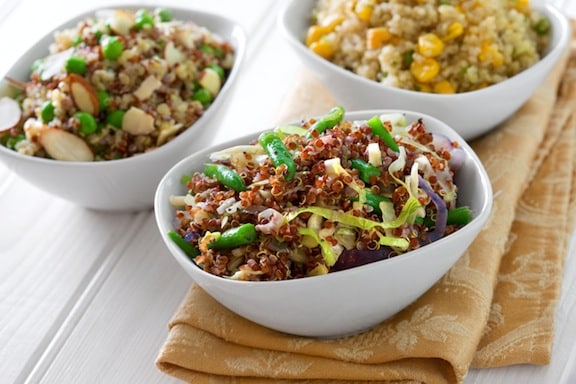
Before you can change your way of eating, you must change your way of thinking. Banish the image of dinner as a piece of meat garnished with mashed potatoes and plain green vegetables. In a diet rich in plant foods and vegan protein sources, there is no such thing as "typical." Here is a sampling of supper menus around the seasons:
Summer: Tabbouli salad with beans or chickpeas added to make it a main dish; Baba ghanouj (roasted pureed eggplant with tahini) with pita bread, marinated cucumbers and fresh fruit salad.
Fall: steamed broccoli with cashews, coleslaw, and baked apples.
Winter: Black bean soup, crusty whole-grain bread, crisp raw vegetables, warm pear and apple crumble.
Spring: Noodles with stir-fried asparagus and cashews, seasonal mixed salad, fresh strawberries with nondairy ice cream.
While this foray into a wide new world of foods might initially be daunting, think of it as a delicious and healthful adventure. Explore ethnic, natural food and vegetarian cookbooks for ideas, then learn to improvise and sim plify to suit your needs and tastes.
What About the Kids?
How do you convert finicky kids accustomed to pizza, hot dogs and burgers to a more plant-based diet? Give them familiar foods, but in more nutritious, plant-based versions. As well as kids and teens, this also applies to picky eaters of the adult variety:
- Make whole-grain pita or natural crust pizzas layered with sauce, steamed vegetables such as peppers and broccoli, and a sprinkling of nondairy cheese.
- Try organic soy hot dogs, now commonly available in supermarkets as well as natural food stores. Serve them in buns or slice and combine with vegetarian style beans to make a meatless version of the classic franks 'n beans. These are good transitional occasional foods, but don't make them staples. They're highly processed and high in sodium.
- Make tofu burgers, chickpea burgers, or vegan sloppy joes and serve them on buns with all the fixings your kids like.
- More ideas likely to please kids: noodles with peanut butter sauce, vegan macaroni and cheese, bean burritos and spaghetti with veggie-filled marinara sauce.
- Protein is all well and good, but vegetables are an intrinsic part healthy, plant-based diets. try Asian-style stir fries. Don't forget, potatoes and sweet potatoes are vegetables, and they are (especially the latter) quite nourishing and don't need a lot of embellishment to appeal to kids. And of course, don't forget to round out your healthy diet with plenty of fruits.
Time-Saving Protein Sources
If you think it takes more time to prepare a plant-based meal, think again. Here are several vegan protein sources that are quick to prepare.
Whole-grain noodles: Try buckwheat, udon and lupini noodles, or domestic whole wheat spaghetti. Most cook in 8 to 12 minutes. Toss with beans, peas, stir-fried vegetables, or diced and sautéed tofu or tempeh. Season Asian-style dishes with sesame oil and soy sauce, and cold summer noodles with fresh herbs.
Quick-cooking whole grains: The high-protein grain quinoa is exceptionally nutritious, very tasty, and cooks in only 15 minutes. Whole grain couscous (pre-steamed, cracked semolina) and bulgur other quick cooking grains. Less quick but good to make ahead are brown rice and millet. All work well as a base for pilafs, grain salads, for stuffing into vegetables, and as beds of grain for bean and vegetable dishes.
Tofu and tempeh: These high-protein soy foods can be prepared in many quick and easy ways. Cut into slices and sauté in a small amount of oil and soy sauce to make cutlets for sandwiches. Diced and similarly sautéed, they can be tossed with grains, noodles and vegetables. Tempeh is particularly good in curried vegetable stews. Crumbled and sautéed, seasoned with tomato sauce, chili powder and oregano, both can substitute for ground meat in tacos, burgers and casseroles. ONLY organic, non-GMO soy products should be used.
Canned beans: For those times when it's impossible to cook beans from scratch, it's handy to have several varieties of canned beans on hand. Versatile, nourishing beans can be tossed into salads, combined with quick-cooking grains or noodles, and used to make quick stews and chilies. Heat up black beans with sautéed onion and garlic, season with lemon juice and serve atop quick-cooking brown rice for a satisfying quick hot dish. For an instant enchilada, top a corn tortilla with pinto beans, prepared salsa and a sprinkling of nondairy cheese and heat until the cheese melts.
Explore VegKitchen's wide array of informative articles on plant-based nutrition.
- For more tips on plant-based nutrition, make sure to browse VegKitchen’s Nutrition page.
- For lots more features on healthy lifestyle, please explore VegKitchen’s Healthy Vegan Kitchen page.


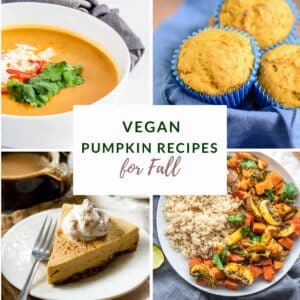
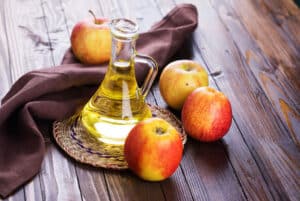
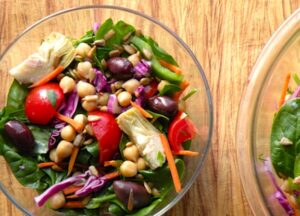
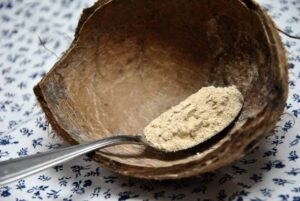
Joan says
Very good article. Soy is a very healthy food, but the estrogen in soy is causing men to develop gynecomastia and other less male-like symptoms. Men's Health has a good article on how soy effects men. http://www.menshealth.com/nutrition/soys-negative-effects
As babies, both of my daughters had an intolerance to baby formula so I gave them soy formula. Wonder how that would have turned out if I had boys?
Like that article points out, soy is in so much of our food. Unless people read the labels, they don't know they're eating it. However, manufactured and processed foods are full of all kinds of things we shouldn't be eating, but that's another story.
The safest thing is to eat naturally grown, unpackaged, unprocessed foods.
dr. mohan sreevatsa says
we are an organization helping malnourished mothers and children. we would like to have more information regarding cost-effective proteins and antioxidants.
Nava says
I believe the organization, Food for Life, would be able to help you with your inquiry: http://www.ffl.org -- they deal with global malnutrition and provide millions of plant-based meals to populations in need.
RaeAnna says
Thank you so much for an article actually informing about plant-based diet. I am trying to steer my family to a more plant-based menu and the internet is littered with sites that simply recommend 'faux' meat products, which in my mind are just as bad as the items I am trying to avoid!
Dana Troy says
Great article. I'm of the early Diet For A small Planet school. And this clarified "rumours" I've been hearing lately.
BUT PLEASE ADD --
ONLY organic soy should be consumed.
GMO soy allows for liberal use of hard-core pesticides -- and research is showing serious problems for pregnant or lactating mothers and their children.
Nava says
Thanks for the comments, everyone. And thanks for the reminder, Dana, I did add those caveats to the article.
Meredith says
I would love to cook my family more plant-based foods, but we have some special challenges: I am pregnant, my 20 month-old is allergic to peanuts, and my husband hates beans. I am working on him, but it's a slow process. Any ideas for plant-based foods my family might actually eat that will provide enough protein, iron, fat, etc. for myself and my little one?
Nava says
Meredith, this article is full of links to protein-packed meals that contain no nuts or beans. Click on them to see what you'll find! I have very few peanut or peanut butter recipes; for your little one, visit the Veg Kids and Teens page for tons of ideas: http://www.vegkitchen.com/kid-friendly-recipes/ on this page you can link to two great articles on eating for pregnancy (they're toward the bottom of the listings) -- and for your husband, on that same page, you might get some ideas in the article on recipes for hungry teens, as they're all great for those in transition (skip the ones with beans! though even bean-haters often like lentils and chickpeas): http://www.vegkitchen.com/kid-friendly-recipes/hearty-recipes-for-hungry-male-teens/ — for your husband and yourself, think of foods you already like, whether they be pastas, stir-fries, or burritos, for example, and think of ways to make them meatless.
To take all the intimidation out and put a lot of fun back into preparing meals, you might look at my book, The Vegetarian Family Cookbook, which is available from a lot of libraries. There's a lot of user-friendly info, plus ways to ramp up basic meals for adult tastes, or break them down for picky eaters. This is all very do-able! We raised two vegetarian sons (now we're all vegan) who grew up enjoying all kinds of food, and now my 20-year-old is a stellar vegan cook in his own right!
Soy Milk Dangers says
While protein only from vegetables might sound good it shouldn't be the only source.
ItsmeLaurie says
@ Soy Milk Dangers ~ you do realize you are posting on a vegan / vegetarian website correct? As a Vegan I DO think you can fulfill all protein needs with a plant based diet. Its the core of what we believe. If we felt we needed to reach out into the animal world for our nutritional needs, well then we wouldnt be Vegans then would we? Quit perpetuating the myth that you need animal products to thrive. It is not so.
Mary Ellen Bowen says
We at the Book Publishing Company have a new book out called, Drop The Fat Act & Live Lean. Here is a humorous approach to the "growing" problem in the world today. This title details a plant-based diet for sustainable weight loss. Review copies are available and I look forward to hearing from you soon about reviewing this book on your site. Thank you and have a great weekend, Mary Ellen, Healthy Living Campaign Manager, 931-964-3571
John says
@ ItsmeLaurie - Easy now, it's a very common misconception, and probably better broken to people in a kind and patient manner.
It's true that animal products are not needed to get a healthy balance of essential amino acids in our diet, but it's going to take a while to get this message to the rest of the world.
Also, I think any time we tell someone they don't need animal products to get a complete protein, we should explain that certain vegan foods need to be eaten in combination to get a healthy balance of amino acids.
Matt Rody says
I love this! I have been doing a cleanse/reset working on getting much more plant based in everything I do!! This is great info and I will use it!! Thanks!
George says
Interesting article. Very informative. One question: should people plan their protein intake based on their current weight or the weight they "should" be. I'm probably 15-20 pounds beyond where I should be, so which weight do I use?
Nava says
George, that's a great question. Sorry for the delayed response. If someone was hugely overweight or underweight, it would probably be a mistake to calculate for protein needs based on the weight that is very off. But in general, it makes sense that protein needs should be calculated based on current rather than intended weight.
UnMuteMe says
Can see low fat food with protein, and nutritional facts at grocery stores http://www.unmuteme.com/protein
Tammy says
I have a pressure ulcer That hasn't healed for 2 years. Which included tons of bed rest and tons of meat, cheese, eggs and tons of whey shakes. I still have completely healed.
I have been doing plant based for a month and feel so much better. They recommend that I have at least if not more than 100 grams more a day. Any idea of how to get that high without living on smoothies?
Nava says
Tammy, we just published our guide to plant-based protein sources. I hope this helps! http://www.vegkitchen.com/nutrition/top-protein-sources-for-the-plant-based-diet/
Sheila says
Tammy, recent research has shown that high protein diets supplemented with arginine, vitamin C, and zinc have healed pressure sores at a rate 2.5 times that of just the high protein diet. So, it might be worth asking your clinical team about these other dietary supplements if they are not already part of your care routine.
Nava says
Sheila, thanks for the helpful input for Tammy.